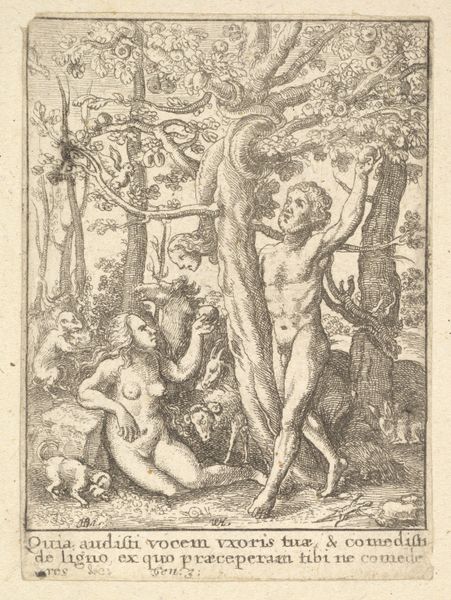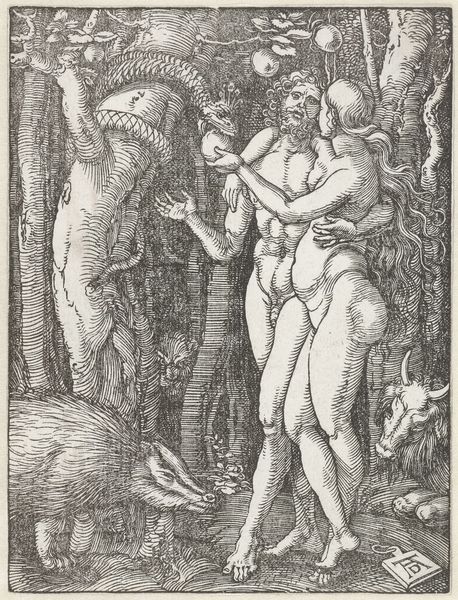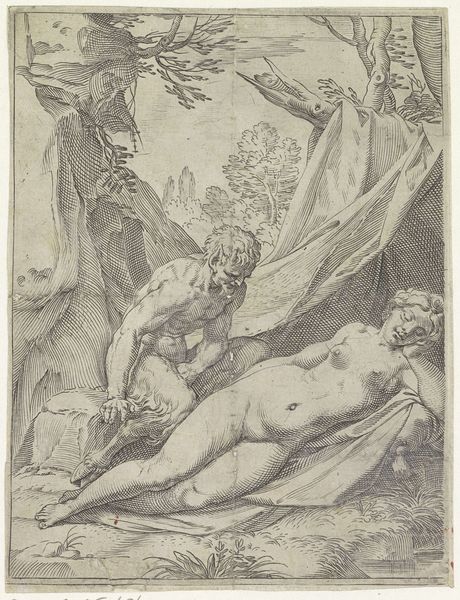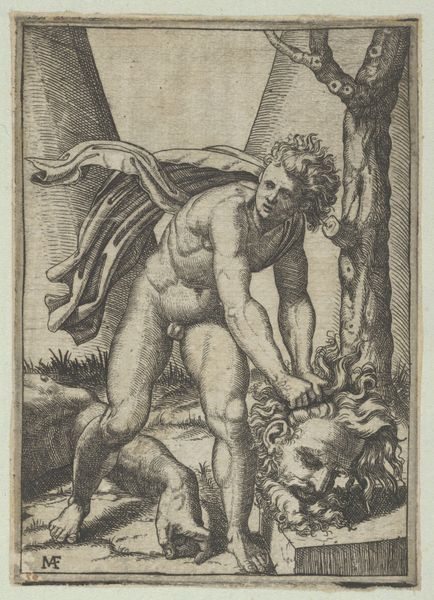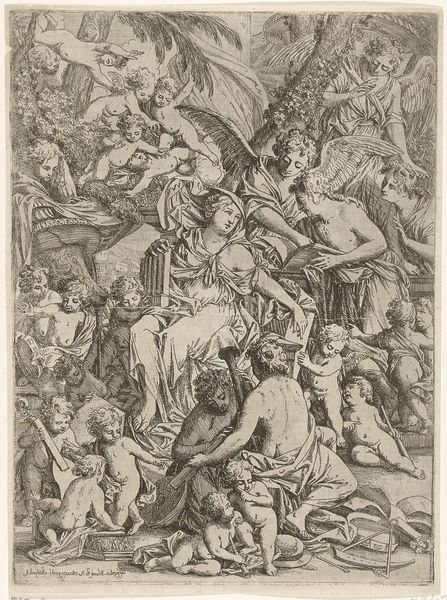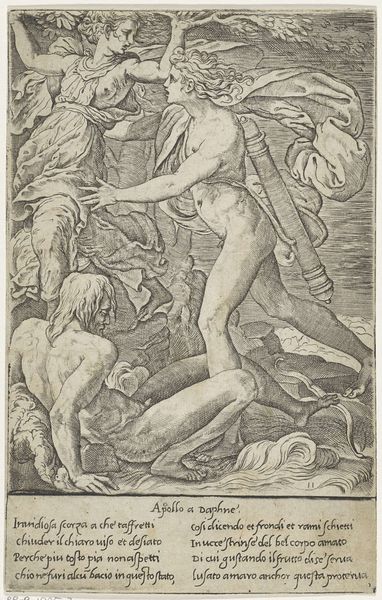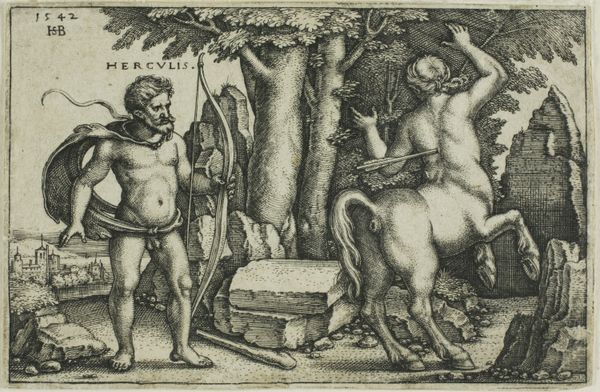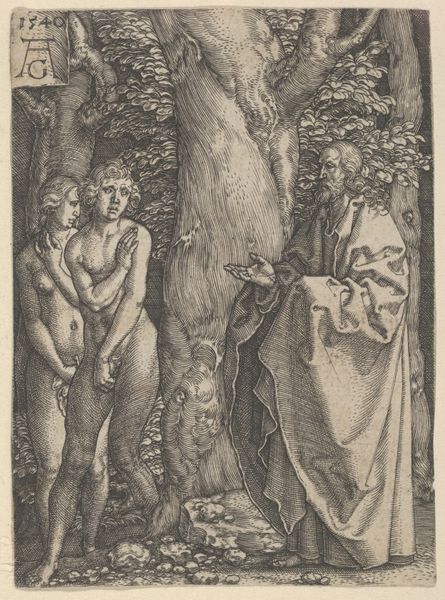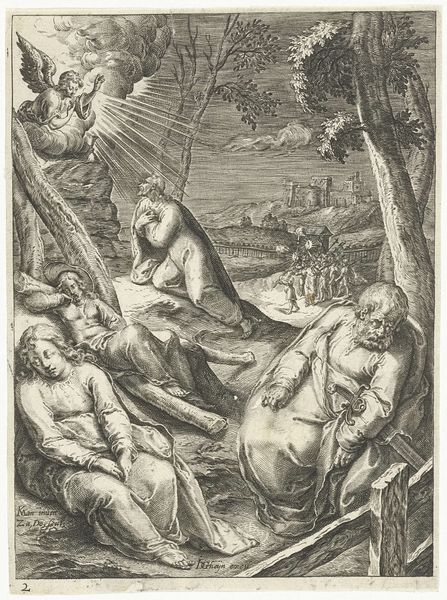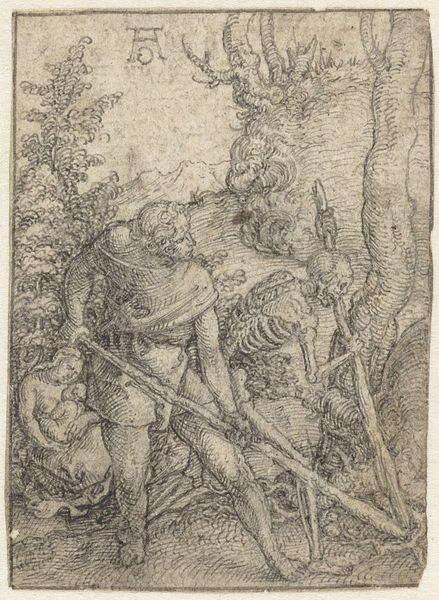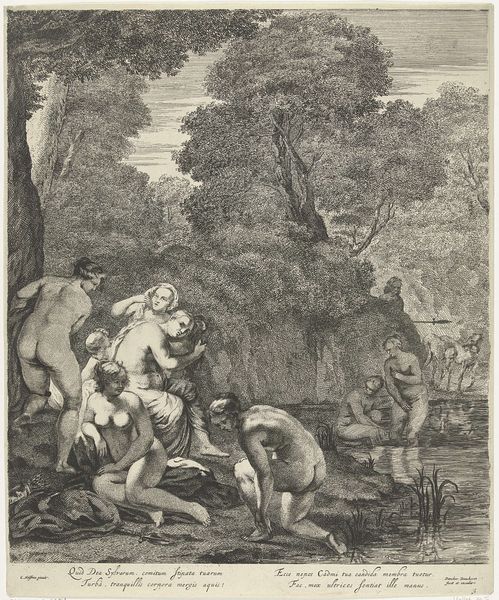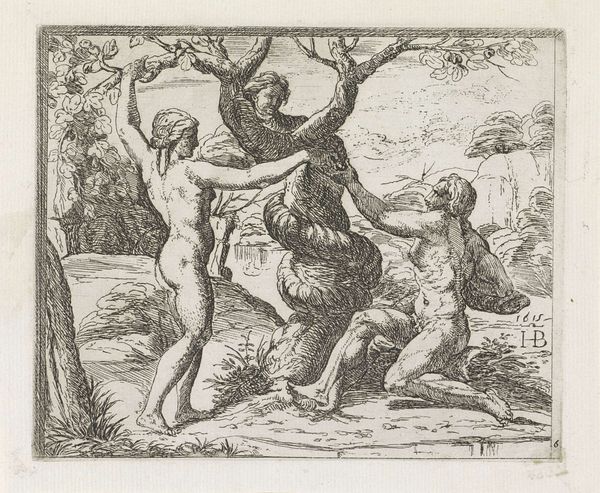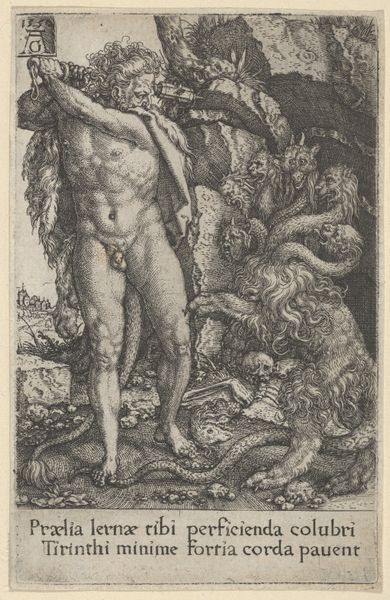
drawing, print, etching, paper
#
drawing
#
ink drawing
#
medieval
# print
#
etching
#
figuration
#
paper
#
history-painting
Dimensions: 73 × 53 mm (sheet, trimmed within platemark)
Copyright: Public Domain
Wenceslaus Hollar made this tiny yet intricate print of the Garden of Eden in the 17th century. It's an etching, meaning the design was bitten into a metal plate with acid, then inked and pressed onto paper. Look closely, and you’ll see the tell-tale signs of the etching process: the crisp, precise lines that define Adam and Eve, the serpent, and the lush foliage around them. Hollar was a master of this technique, using it to create a world teeming with detail despite the print's small scale. The etching process itself has a social dimension. It allowed for the mass production of images, making art more accessible to a wider audience than unique paintings. In this way, Hollar's print participates in the early modern world of commerce and the circulation of ideas, inviting us to consider how such readily available imagery shapes our understanding of religious stories.
Comments
No comments
Be the first to comment and join the conversation on the ultimate creative platform.
